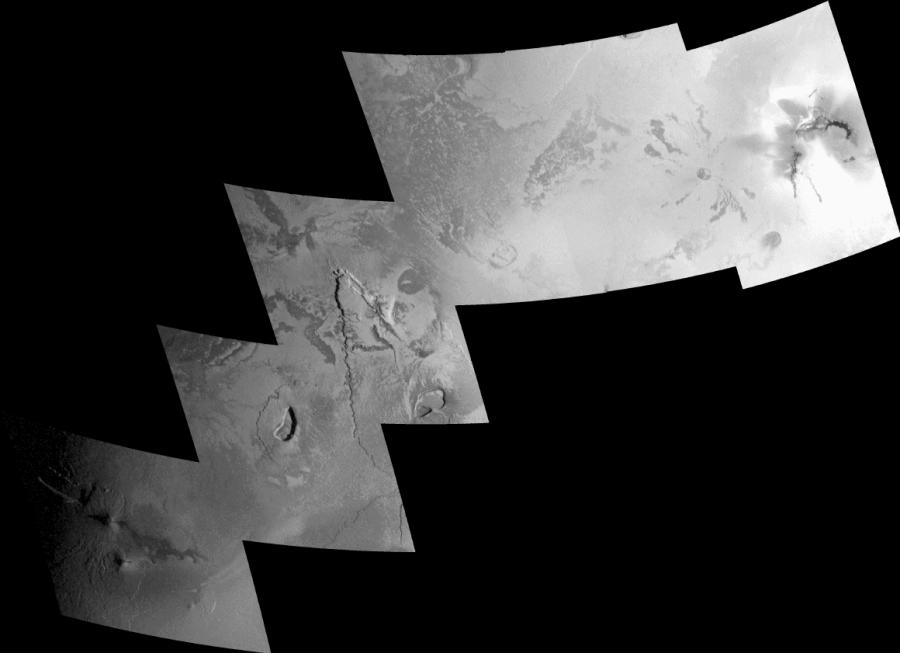

NASA's Galileo spacecraft acquired this regional mosaic of the Zamama-Arinna Fluctus region of Io on 16 October 2001. The Zamama lava flow field emanates from from the northernmost of two small volcanoes in the far left frame. These lava flows were not present in Voyager images of Io, and thus formed sometime between the Voyager flybys in 1979 and the first Galileo observations of Io in 1996. Galileo also observed Zamama during a flyby in July 1999 and a closer flyby in October 1999, and scientists identified narrow, long dark lava flows thought to be similar to those erupted in Hawaii.
Moving northeast, the second and third frames of this mosaic contain lava flow fields and several unnamed paterae, or volcanic depressions. It is unclear whether the broad shield-like features or plateaus on which the paterae rest were created by eruptions from the paterae, or if they were preexisting topographic features. There are also some fractures and dark lines, suggesting that the crust here is breaking up, creating cracks that magma can use to rise to the surface.
The sixth frame of this mosaic, at far right, contains dark lava flows and bright spots. The bright spots are probably sulfur-bearing plume deposits, which are thought to be associated with the source of a 500-kilometer (310-mile) high plume eruption observed by the Galileo spacecraft in August, 2001. This was the largest plume eruption ever observed on Io.
Image produced by: Zibi Turtle, Planetary Image Research Lab. (PIRL), Lunar and Planetary Lab. (LPL), University of Arizona
The Jet Propulsion Laboratory, a division of the California Institute of Technology in Pasadena, manages the Galileo mission for NASA's Office of Space Science, Washington, D.C. Additional information about Galileo and its discoveries is available on the Galileo mission home page at http://galileo.jpl.nasa.gov/. Background information and educational context for the images can be found at http://galileo.jpl.nasa.gov/images/io/ioimages.html.
NASA's Planetary Photojournal PIA-03531
May 28, 2002